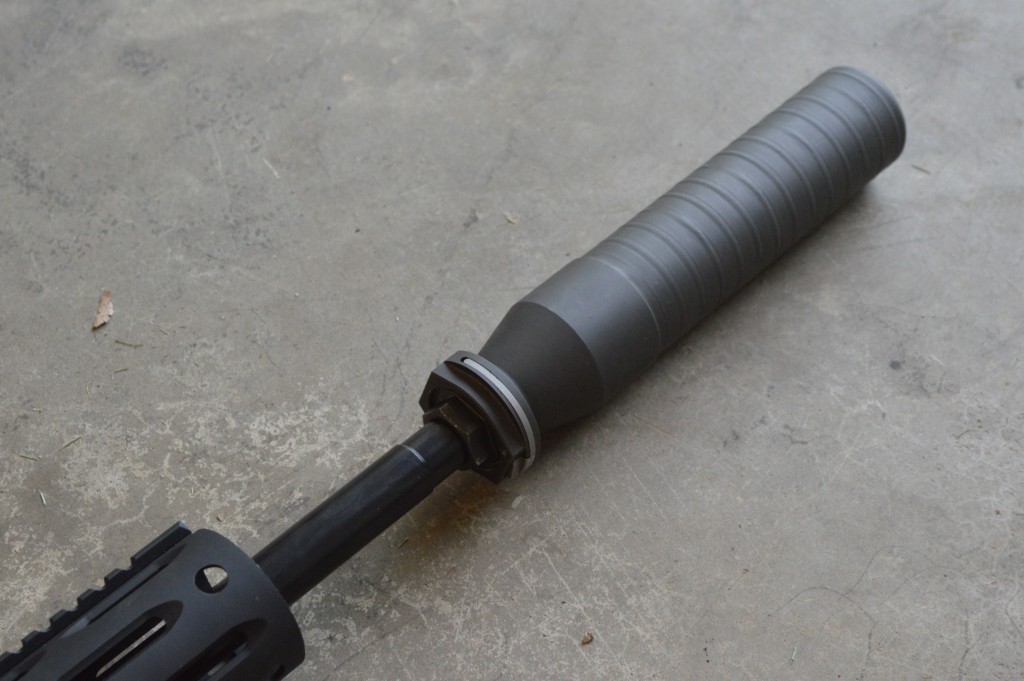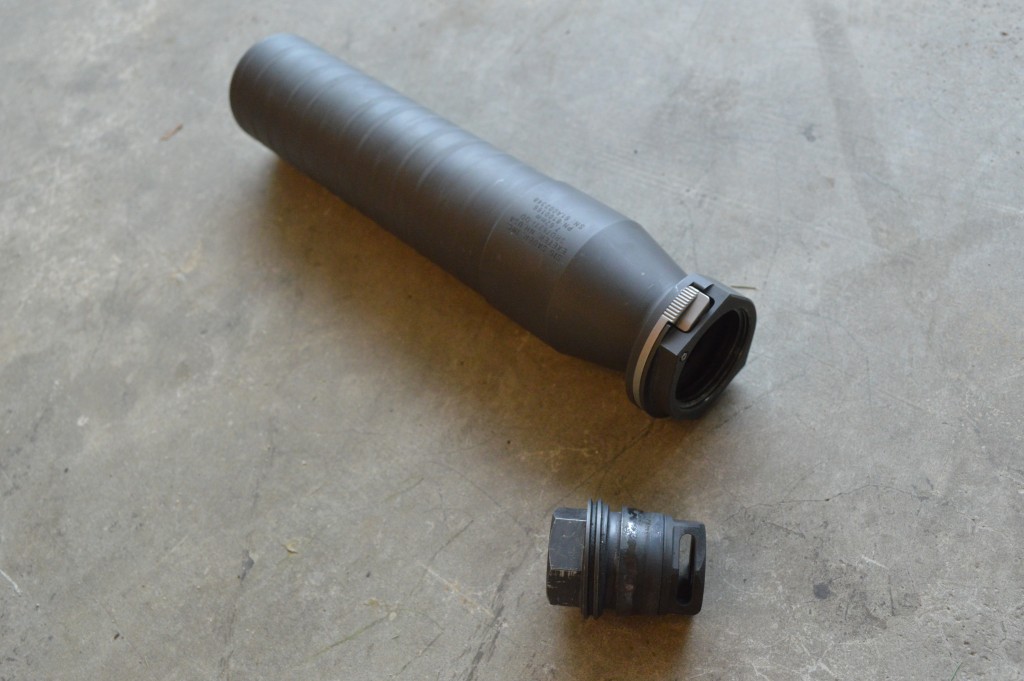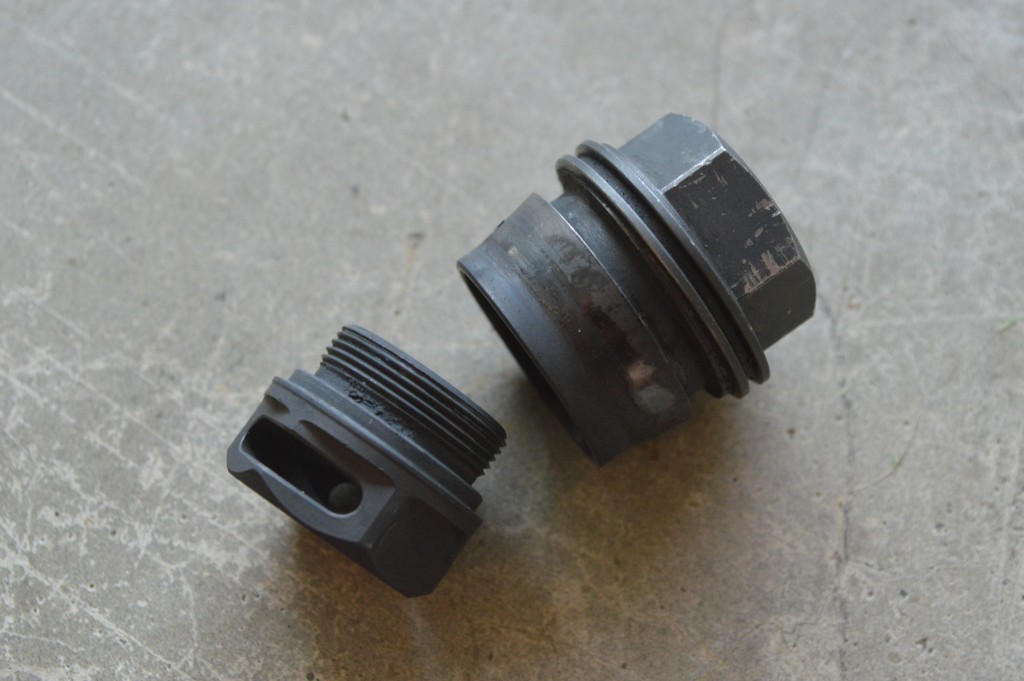Silencer Shop Authority: SIG SRD762Ti-QD Review
A few months ago, I was cruising through a few of my favorite YouTube channels and noticed that Tim over at Military Arms Channel had brought in SIG’s new SRD762Ti series silencers for demonstration and testing. When I saw the numbers he posted for the cans, I was mightily impressed, but I probably should not have been. After all, SIG’s new suppressor division was essentially built by industry veterans, Kevin Brittingham and John Hollister. Furthermore, I’ve had Silencer Shop’s test data for the SRDs listed in the Suppressor Performance Database for quite a while, but the numbers (specifically for .300 BLK) seemed almost too good to be true.
Still, as I saw it, the best way for me to assess the competitive legitimacy of SIG’s first foray into .30 caliber suppression was to bring the silencers in for examination. After shooting a note over to the guys at Silencer Shop, I was able to spend a couple of weeks with both the SRD762Ti and its quick attach brother, the SRD762Ti-QD. I’ve already addressed the thread mount suppressor, so today we will take a closer look at SIG’s QD offering.
Size & Weight
SIG’s approach to their titanium and stainless steel (actually Inconel) suppressors is fairly unique. Rather than recycle the same designs with different materials, the two lines are remarkably different. While the Inconel SRD762-QD is 7.3 inches long and 1.625 inches in diameter, the SRD762Ti-QD that we’re examining here is approximately 8.25 inches long and 1.75 inches in diameter.
SIG has explained that these differences have to do with maximizing the value of the materials used in each. Inconel is rugged but relatively heavy. Meanwhile, titanium is substantially lighter but happens to be less durable. SIG could have recycled the SRD762-QD’s blueprints for the titanium version, but they chose to give back some of the weight savings in order to offer a slightly larger can that better handles high pressure and outperforms the Inconel model. Even with these changes, the 16.4 ounce (19.3 ounces with mount) SRD762Ti-QD is still two or three ounces lighter than the SRD762-QD.
Design & Materials
As its name implies, the SRD762Ti-QD is constructed entirely of Grade 5 titanium. Titanium might not be as durable as other popular materials, like 17-4 stainless and Stellite, but it keeps the can light. The SRD is still full-auto rated for any of the popular calibers that fit through it.
At least as far as the US market is concerned, SIG’s suppressors are unique because they feature no outer tube. The SRD762Ti-QD is mostly just a circumferentially-welded baffle stack. This design saves weight and technology has progressed to the point that SIG isn’t sacrificing significant durability with the approach. Furthermore, the most abused portion of the silencer, the blast chamber, is a machined chunk of titanium. So it is further reinforced against high-pressure ammunition. This separate blast chamber also houses the silencer’s mounting interface.
While we have baffles on the mind, SIG’s stack is quite a bit different than other manufacturers’. Usually, companies try to limit the number of baffles in their silencers in order to leave sufficient room for gas expansion. However, SIG’s titanium cans are substantially wider in diameter than most of the competition. Internal volume comes at less of a premium for the SRD. For this reason, SIG has packed thirteen conical baffles inside the suppressor. Each of these features stepped bores for maximum suppression. They also come with holes drilled in the skirt of each baffle, which seem to minimize backpressure.
Topping off the SRD is a Physical Vapor Deposition (PVD) finish. PVD finishes are similar to the TiN finish used on some AR-15 bolt carrier groups. PVD is also used to treat Beretta’s sand resistant M9 magazines. In my experience, PVD-treated parts are slick and easy to clean and the finish is at least as durable as most painted coatings.
They may be more than a little ugly, but SIG has absolutely nailed it with their Taper-Lok mounts. The rearmost section features a prominent, tapered surface that engages a similarly angled face inside the suppressor. Behind the taper, you’ll find a circumferential groove. Once the silencer is threaded onto the mount, the can’s AAC-esque locking arm closes and a small tab attached to the lever falls into the mount’s groove. This prevents the silencer from moving forward on the mount and very effectively locks it in place.
The intriguing aspect of SIG’s mount design is that the accessories consist of two separate pieces. Aside from the primary mounting section described above, the muzzle devices also feature a forward section that can be quickly swapped between muzzle brake and flash hider inserts. Users do not need to remove the entire device to change its capabilities. Since these inserts are timed using an internal crush washer, the tapered mount also requires no shimming. Though swapping muzzle accessories is rather trivial for many of us, SIG’s take is certainly novel.
Rounding out the mount are 22mm wrench flats to assist in torqueing it to the barrel and a tapered section at the beginning of the device’s threads. The taper is an interesting feature that SIG has introduced to all of their suppressors and firearms. Guns like their MPX and MCX have tapered (rather than square) thread shoulders that allow users to more effectively snug their SIG silencers and muzzle accessories to the firearm. It’s an intriguing design and I wonder if other companies will incorporate similar features at some point.
Range Report
As I noted in my review of the SRD762Ti, SIG’s titanium SRD silencers are the unequivocal kings of .300 BLK suppression. Since they’re wider in diameter than other options, they offer more internal volume for low pressure .300 BLK to expand, which translates to quieter report and less backpressure. According to testing from both Silencer Shop and Military Arms Channel, the SRD762Ti-QD offers metered sound reduction of around 40 dB on .300 BLK hosts. That’s serious performance that even the venerable Surge 762 cannot match.
In person, the SRD762Ti-QD’s .300 BLK advantage is noticeable. This isn’t a case where the can holds a one or two-decibel edge over its competitors. With .300 BLK, the SIG bests most of its rivals by at least 3 dB. That’s a noticeable advantage. I almost laughed when I heard the can on my .300 BLK AR. It was just so incredibly quiet.
The SRD does start to retreat toward the middle of the pack when used with .308 hosts. Since full power .308 operates at much higher muzzle pressures than .300 BLK, escaping gasses travel forward much faster and the can’s large diameter is not used as efficiently as with lower pressure cartridges. On my PTR-91, the SRD sounded good enough to turn heads on the firing line and another shooter even came down to my bench to check it out. Still, it doesn’t rise above the crowd on .308 hosts.
Though meter performance is mostly similar between the thread mount SRD762Ti and the quick attach SRD762Ti-QD, there are some notable experiential differences that exist. The most significant of these is that the QD version is, in my experience, a gassier can than the thread mount model. The SRD-QD starts out with a smaller blast chamber than the threaded version and then forfeits additional internal volume to the mount. It is also a bit shorter (~1 inch) than the direct thread model. In my opinion, this results in slightly more backpressure and gassiness. If you’re looking to maximize overall performance, go with the SRD762Ti. However, if you’d rather have a quick attach silencer, the SRD762Ti-QD is still an excellent product.
Conclusion
Both of SIG’s titanium .30 caliber suppressors impressed me. Considering the company’s relative youth in the market, I really had very limited expectations for their initial offerings. However, it is clear that the talented folks that they’ve brought in to run their silencer division have SIG on the right track.
When it comes to .300 BLK performance, there really aren’t any better options on the market. Both the SRD762Ti and SRD762Ti-QD sit at the top of the Blackout food chain and choosing between one or the other basically comes down to maximizing performance (SRD762Ti) or quick attachment (SRD762Ti-QD). The QD version is also shorter than its threaded brother, but the difference is not great in practice.
Readers looking to purchase the SIG SRD762Ti-QD can find the can at Silencer Shop for a hair over $900.
An information security professional by day and gun blogger by night, Nathan started his firearms journey at 16 years old as a collector of C&R rifles. These days, you’re likely to find him shooting something a bit more modern – and usually equipped with a suppressor – but his passion for firearms with military heritage has never waned. Over the last five years, Nathan has written about a variety of firearms topics, including Second Amendment politics and gun and gear reviews. When he isn’t shooting or writing, Nathan nerds out over computers, 3D printing, and Star Wars.














